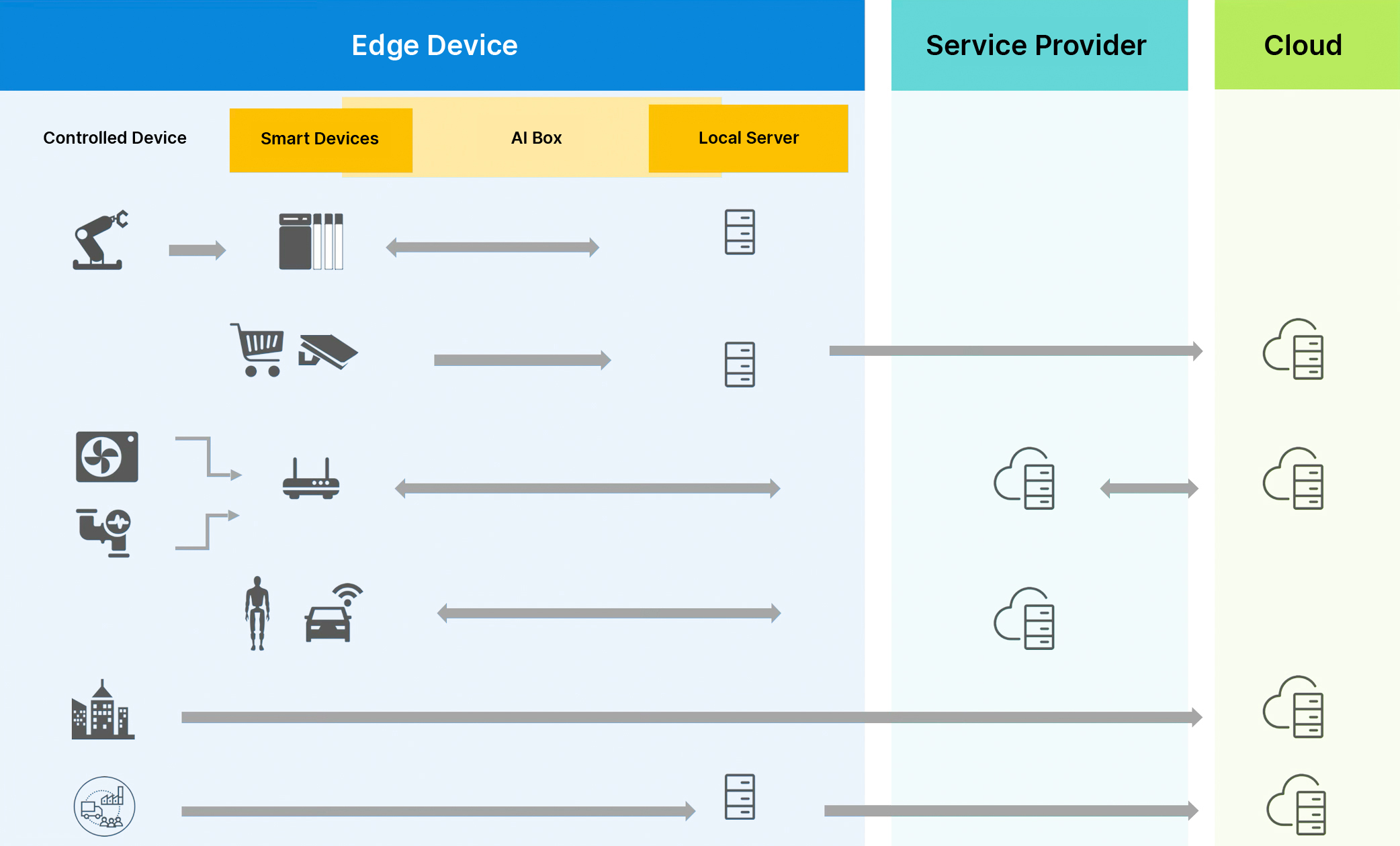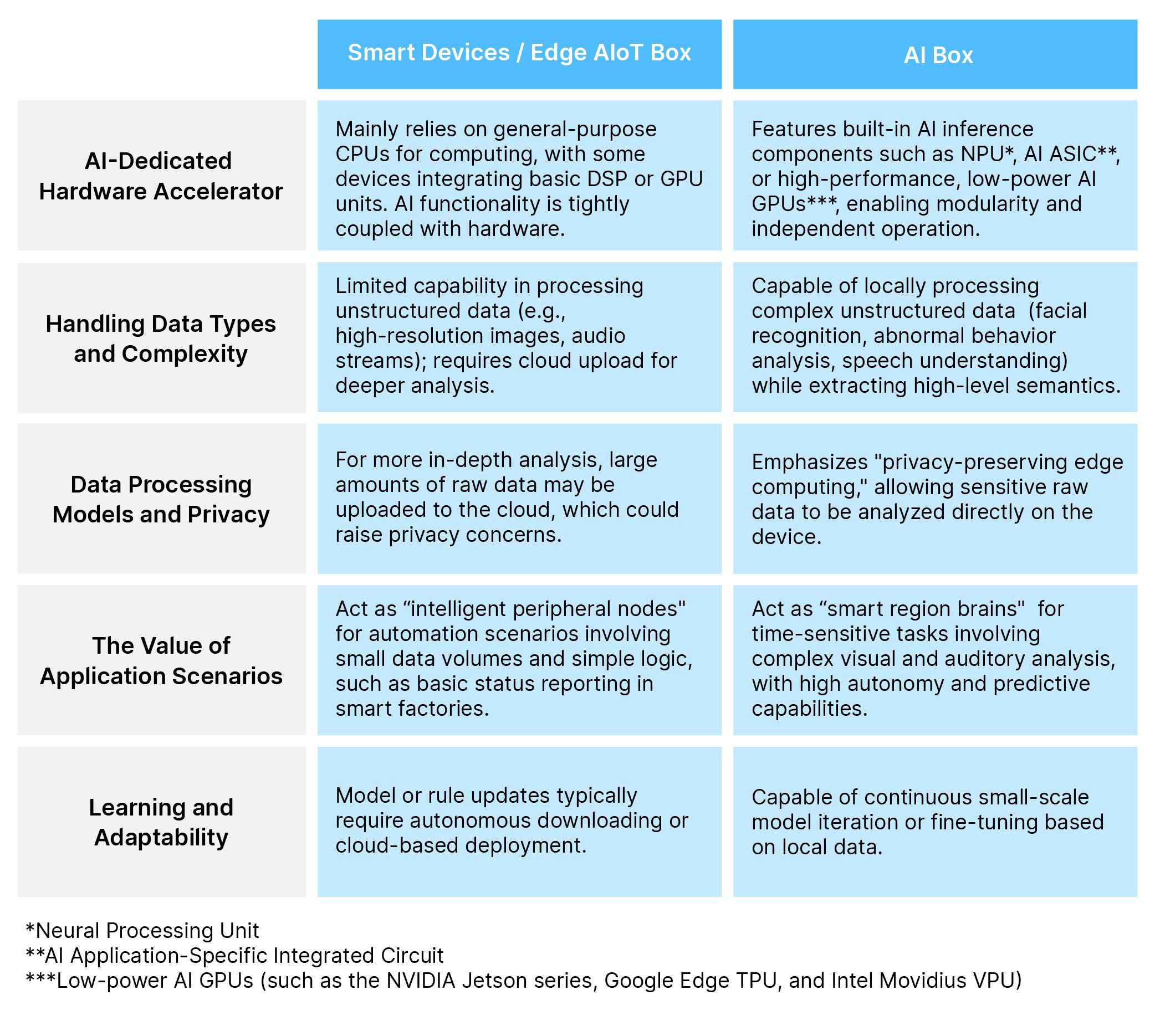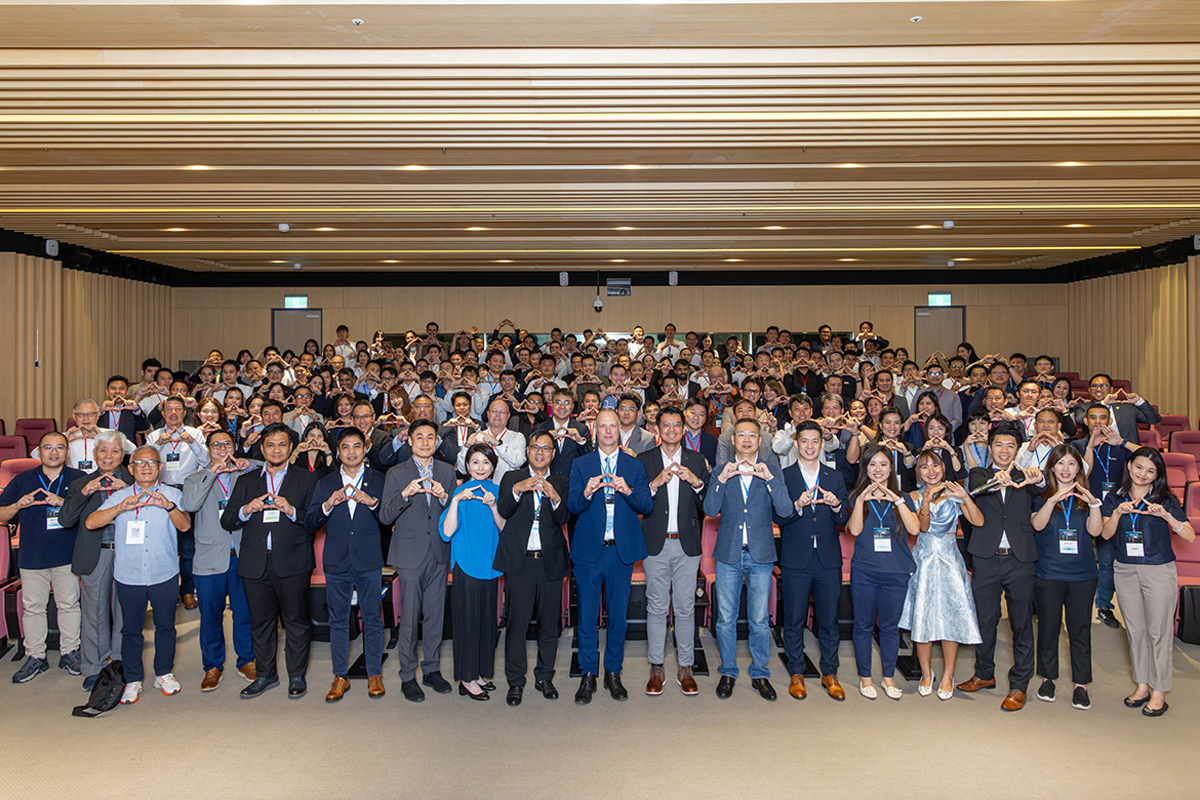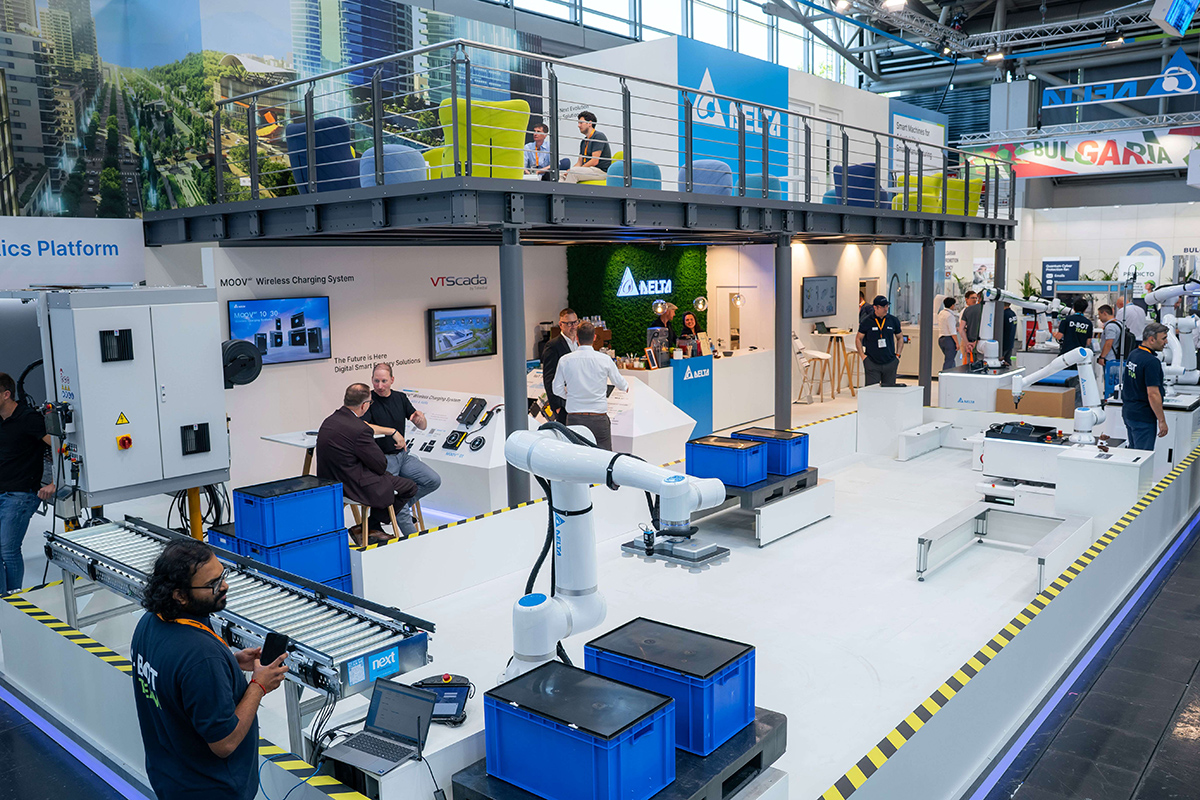With the rapid development of Artificial General Intelligence (AGI), a new concept—the "AI Box"—has gradually emerged. However, the AI Box did not emerge out of nowhere; it is the result of decades of integration and evolution in the ICT field.
What is the AI Box?
The AI Box typically refers to a physically or logically isolated system housing a highly intelligent AI. Its purpose is to prevent the AI from causing negative impacts on the outside world while allowing humans to safely interact with it and extract knowledge. Compared to the previous-generation smart device (Edge AIoT Box), the most significant difference of the AI Box lies in its significantly enhanced core computing power and its ability to support complex AI model inference. It is not merely a simple addition of AI capabilities to the existing IoT Box, but a fundamental innovation in hardware architecture, software stack, and application scope.
In terms of hardware architecture, this is reflected in the ultimate pursuit of chip technology, breakthroughs in high-speed interconnects and bandwidth, as well as innovations in memory technology. The software stack covers everything from low-level AI compilers and deep learning framework optimizations to high-level model compression and quantization technologies, all aimed at maximizing hardware potential. In terms of application, the physical size of the AI Box gives it advantages across different levels of use.
The micro AI Box or edge AI module is typically similar in size to a mobile phone or credit card. Equipped with a low-power AI chip, it can be integrated into space-constrained devices such as smart locks, small robots, wearable devices, and smart home appliances.
The compact AI Box or industrial edge AI gateway typically measures between the size of a palm and that of a book. Featuring a fanless design with industrial-grade dustproof, shockproof, and wide-temperature capabilities, it is suitable for existing infrastructure in smart cities, retail, agriculture, and manufacturing.
The high-performance edge AI server or appliance is similar in size to a standard server or a small workstation, and is mostly designed as a rack or tower unit. Equipped with large memory and storage capacity, as well as redundant power supplies and advanced cooling systems. Suitable for airports, ports, and data centers.

The AI Box provides deployment options beyond smart devices and local servers (compiled by NBDMD).
The AI Box: general to specialized
With its modularity and independence, the AI Box can serve as a universal platform. Transforming a general-purpose AI Box into a domain-specialized "All-in-One Box" is not only a combination of technical capabilities but also a fulfillment of the deep-seated needs of specific industries. The AI Box has demonstrated even more significant results in fields with extremely high demands for privacy, real-time performance, and accuracy.
Contactless vital signs monitoring and fall alert system: Utilizing millimeter-wave radar and thermal sensing data, the system pilot-tested in multiple nursing homes reduced rescue time after falls by over 30%, while enhancing residents’ sense of privacy and security. Families have given high praise to this smart approach to care. (Note 1)
Real-time anomaly detection: Smart streetlights are equipped with an AI Box that can analyze surveillance footage in real time, identifying potential criminal activities (such as fighting and pickpocketing), suspicious packages, pedestrian falls, and other emergencies at the edge. They promptly alert the nearest police station. Data processing is completed locally, reducing privacy concerns. (Note 2)
Disaster prevention and coordination: By integrating an AI Box with a smart sensor network (such as smoke detectors and earthquake monitors), data can be rapidly analyzed at the edge to identify risks like fires and earthquakes. Information is then transmitted in real-time through a collaborative network to surrounding AI Boxes, triggering regional alerts and evacuations. (Note 3)
Human-robot collaboration and operational safety: Deploying AI Boxes around collaborative robots or workstations, connected to high-resolution 3D vision sensors such as cameras and LiDAR, enables real-time assessment of collision risks, operational compliance, and the need for robots to deliver tools or assist in complex assembly tasks. (Note 4)
The AI Box is not merely a stack of chips or hardware, but rather an integration of software platforms and domain expertise. The true developers of general-purpose AI Boxes into all-in-one solutions for various industries are application-leading companies with end-to-end software and hardware integration capabilities. In the future, the AI Box is expected to be flexibly assembled and customized like Lego bricks across various industries, potentially inspiring countless innovative applications.
Note 1: CarePredict (United States), Vayyar Imaging (Israel), Essence Group (Israel)
Note 2: Hitachi Vantara (Japan), Motorola Solutions (United States)
Note 3: Cisco Systems (United States)
Note 4: Siemens (Germany), Advantech (Taiwan)
















